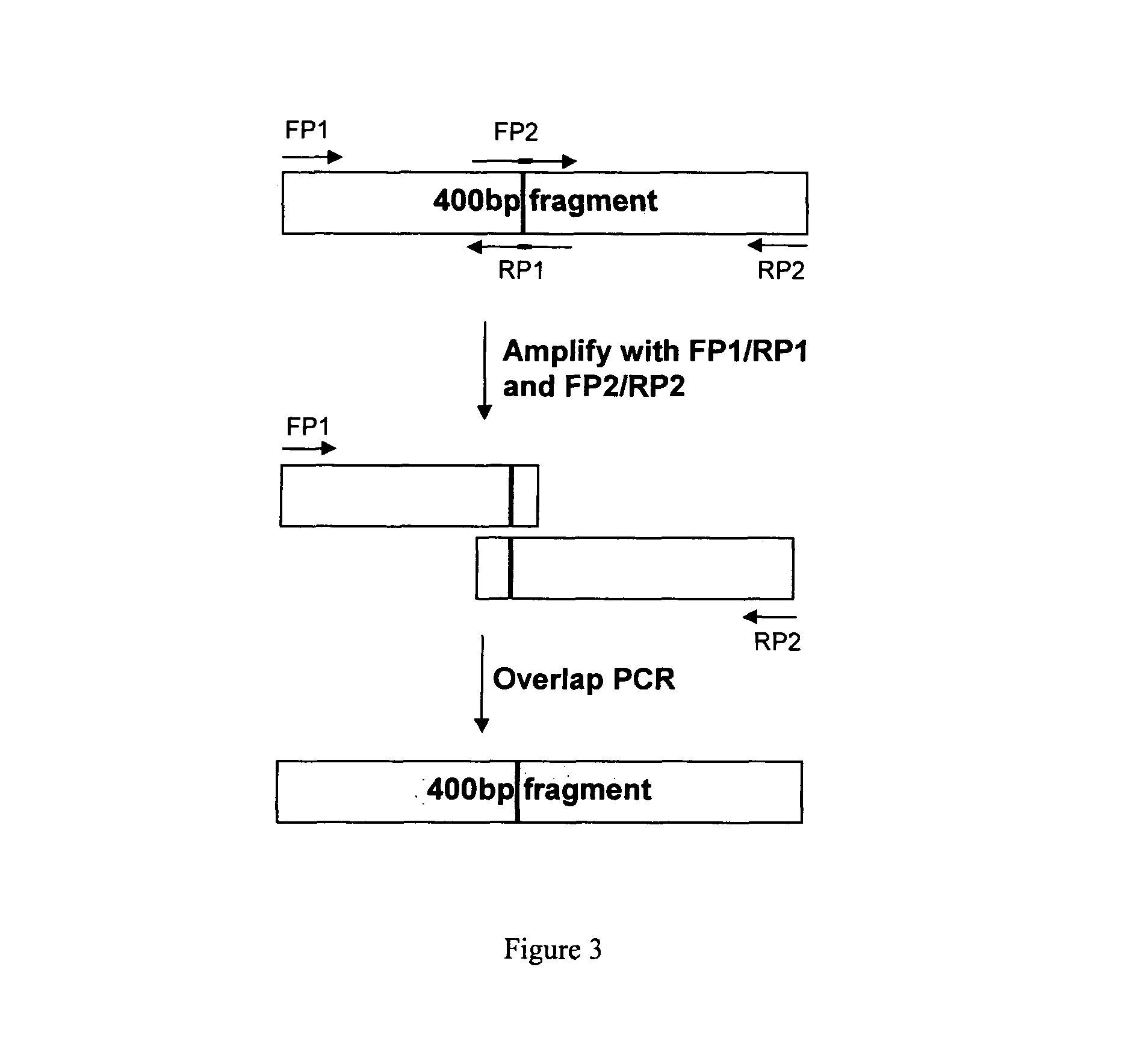Method of producing biologically active polypeptide having insulinotropic activity
a technology of biological activity and polypeptide, which is applied in the field of system for producing an insulinotropic peptide, can solve the problems of not being able to produce full length polypeptides for a person skilled in the art, and achieve the effect of full length polypeptide production
- Summary
- Abstract
- Description
- Claims
- Application Information
AI Technical Summary
Benefits of technology
Problems solved by technology
Method used
Image
Examples
example 1
Synthesis of Codon Optimized GlyExendin-4 CDS
[0059]A codon optimized nucleotide sequence coding for GlyExendin-4 (Sequence ID No: 5) was synthesized by polymerase chain reaction (PCR) using overlapping oligonucleotides. Ten oligonucleotides were synthesized to cover the GlyExendin-4 gene along both strands having 14 bp overlapping region with the successive primers. The overlapping oligonucleotides were phosphorylated in a reaction mixture containing 10×PNK buffer, T4 polynucleotide kinase, and dATP. Equimolar amounts of phosphorylated oligonucleotides were annealed and then ligated using T4 DNA ligase.
[0060]The ligation mixture was used as a template for amplification of the GlyExendin-4 CDS by PCR using the oligonucleotides, 5′-CTC GAG AAA AGA CAT GGA GAA GGA ACA TTT ACA TC-3′ (Sequence ID No: 6) (forward primer) and 5′-GAA TTC TTA TCC AGA TGG TGG-3′ (Sequence ID No: 7) (reverse primer). The PCR reaction was performed according to standard protocols, and amplification was done in ...
example 2
Cloning of Codon Optimized GlyExendin-4 CDS into Sequencing Vector
[0061]The 140 bp PCR fragment obtained after amplification was cloned into the vector pTZ57RT / A using a TA cloning kit (Fermentas), in a reaction mix containing 3 μl of vector, 2 μl PEG4000 PCR buffer, and 1 μl T4 DNA ligase. DH5α competent cells were transformed, and positive clones containing the GlyExendin-4 gene fragment were screened by restriction digestion. One of the positive clones was sequenced on both strands.
example 3
Subcloning of GlyExendin-4 CDS into an Expression Vector
[0062]The GlyExendin-4 fragment from the TA clone (see Example 2) was excised using EcoRI and XhoI and sub cloned into the same sites of the Pichia pastoris expression vector pPIC9K (Invitrogen, San Diego, Calif.). This placed GlyExendin-4 nucleotide sequence in frame with the Saccharomyces cerevisiae Mat alpha signal peptide and under the control of the methanol-inducible alcohol oxidase (AOXI) promoter (FIG. 1). The expression vector was transformed into Pichia pastoris by electroporation as described in the invitrogen manual.
PUM
| Property | Measurement | Unit |
|---|---|---|
| volume | aaaaa | aaaaa |
| resistance | aaaaa | aaaaa |
| capacitance | aaaaa | aaaaa |
Abstract
Description
Claims
Application Information
 Login to View More
Login to View More - R&D
- Intellectual Property
- Life Sciences
- Materials
- Tech Scout
- Unparalleled Data Quality
- Higher Quality Content
- 60% Fewer Hallucinations
Browse by: Latest US Patents, China's latest patents, Technical Efficacy Thesaurus, Application Domain, Technology Topic, Popular Technical Reports.
© 2025 PatSnap. All rights reserved.Legal|Privacy policy|Modern Slavery Act Transparency Statement|Sitemap|About US| Contact US: help@patsnap.com



